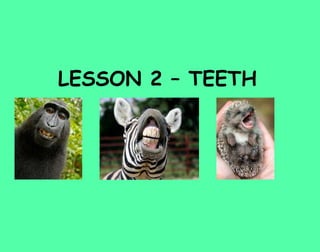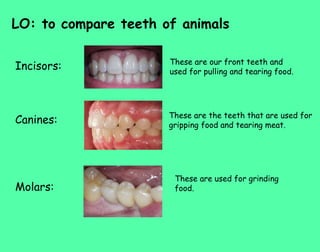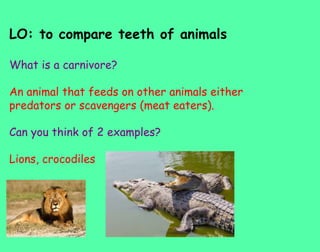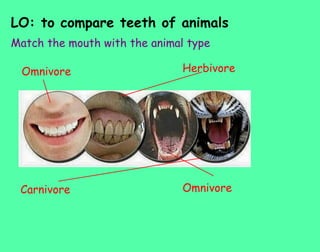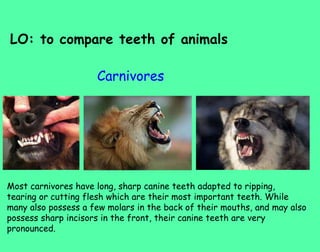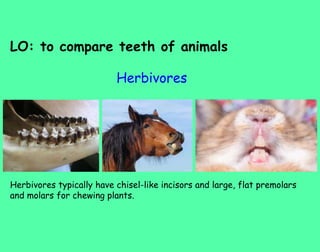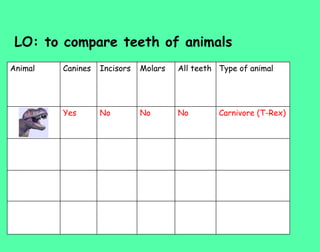This document discusses different types of teeth and their functions. It defines carnivores as meat-eating animals with sharp canines, herbivores as plant-eating animals with flat molars and incisors for chewing, and omnivores as animals that eat both plants and animals with a mixture of teeth. Examples are given such as lions and crocodiles for carnivores, cows and pandas for herbivores, and humans and mice for omnivores. The document explains how the teeth of each group are adapted to their diet and includes a table to sort pictures of animals by their teeth and diet type.
